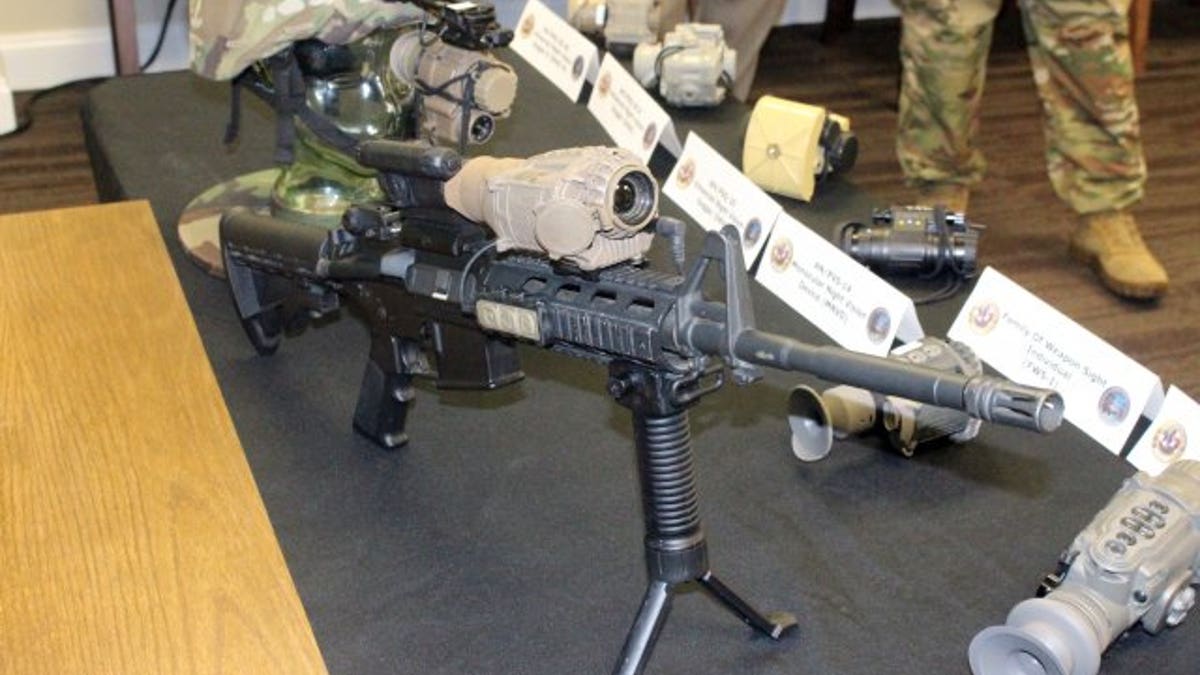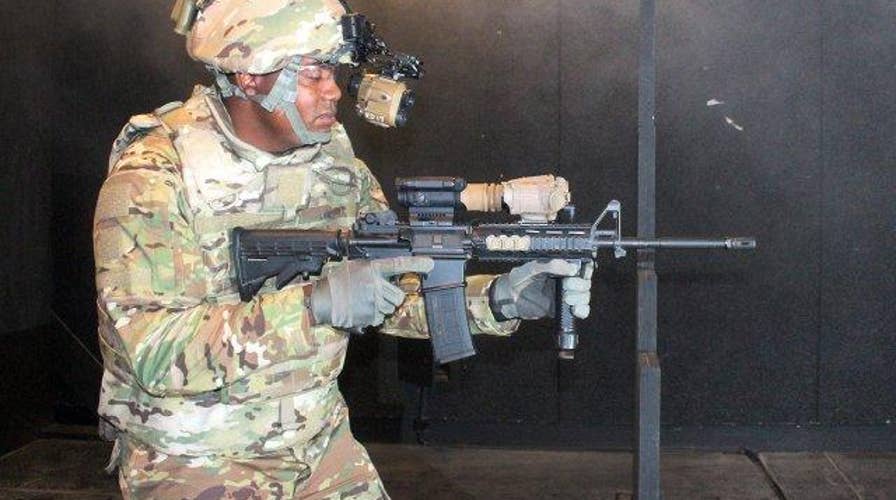Soldiers get new targeting to hit enemies instantly
U.S. soldiers are getting new technology to shoot around corners and hit enemies instantly.
As attacking enemies appear and vanish in seconds from around corners, rocks and trees - armed U.S. soldiers in Close Quarter Combat often have little or no time to respond, while their lives often hang in the balance.
As a way to address this, the Army has leveraged wireless networking technology to give soldiers a distinct advantage; a new system connecting night vision goggles with rifle targeting sights will arrive in a matter of months, enabling soldiers to fire around corners and hit enemies instantly, without having to “shoulder” their weapon.
“You see this gray circle in your night vision goggles, with a red dot …. no matter where your weapon is,” Brig. Gen. Tony Potts, Program Executive Officer, PEO Soldier, told Warrior Maven.
A wireless link will show the reticle from thermal weapons sights directly into the night vision goggle display, allowing soldiers to quickly track and destroy targets without needing to actually lift the weapon to their head to see the crosshairs through the thermal sights.
This system, called Rapid Target Acquisition, is slated to arrive in early 2019, Potts said.
Rapid Target Acquisition merges two separate Army developmental efforts which involve integrating Enhanced Night Vision Goggle IIIs, with next-generation thermal weapons sights --called Family of Weapons Sights – Individual, or FWS-I, Army officials said.

File photo - An Enhanced Night Vision Goggle III is mounted on a glass skull, and a Family of Weapons Sights-Individual is mounted on an M4 rifle, at Fort Belvoir, Va. The ENVG III, worn on the head, can be paired wirelessly with a FWS-I, which would be mounted on a weapon, to allow soldiers to see in their eye what the weapon sight is seeing. (Photo Credit: Jalen Brown)
FWS-I is a thermal sight mounted on top of an M-4 rifle. It can also be configured for crew-served weapons such as a .50-cal machine gun or sniper rifle, Army officials said.
ENVG III Night Vision Goggles embody a new generation of longer-range, higher resolution targeting for soldiers, designed to merge with an Army Helmet Mounted Display, according to Army Research, Development, Test & Evaluation documents.
The integrated system “detects enemy snipers using precise target information to mitigate operational risk before sniper fire occurs. This project also integrates high resolution thermal focal plane arrays, integrated ballistic solutions for auto-adjusting reticles,” the Army write up says.
The thermal sights on an FSW-1 give soldiers targeting range past 1,000 meters, nearly twice that of the M4, a report from DoD’s Armed With Science writes.
This expanded range for FWS also extends to M249 Crew-Served Weapons and Sniper rifles as well.
“The FWS program integrates smaller pixel (12 micron) uncooled long-wave infrared focal plane arrays in multiple large format sizes to improve sensitivity, clarity, and range, while simultaneously reducing the size, weight and power consumption of Crew-Served and Sniper weapons,” Army RDT&E planning documents explain.

A shooter fires on a target at a Fort Belvoir, Va., firing range, July 27, 2017, using an Enhanced Night Vision Goggle III on his helmet, and a Family of Weapons Sights-Individual on an M4 rifle. Here, the combined video feed from both the sight and the goggle puts the reticle from the weapon onto the video feed the shooter is seeing in his goggle. (Photo Credit: PEO Soldier)
Another advantage, according to an Army report, is that the new integrated system enables soldiers to see through obscurants, such as smoke or fog.
“Under starlight, targets may blend in with the background. But with the thermal capability overlaid on night vision, targets can't hide in smoke or fog,” the report says.
Despite its tremendous promise, this emerging weapons systems may also face new challenges and threats it will need to address. For instance, it seems likely the Army will work to cyber harden the wireless connection to ensure it does not get hacked, compromised or jammed by high-tech enemies.
Leveraging faster processing speeds and computer technology to exponentially improve combat performance brings unprecedented advantage, yet at the same time, the more networked a weapons system becomes, the more it will need safeguards and protections against increased vulnerability to cyber attack.
This phenomenon holds up across the military services; as weapons systems, networks, fire control technologies and targeting sensors become increasingly networked through computer systems, they can simultaneously become both much more effective - and more vulnerable. More combat-relevant assets can become vulnerable in the event that a single point of entry is located. For this reason, the Army and military services are moving quickly to cyber harden weapons systems and networks.
Also, Potts explained that marksmanship training courses will be necessary for soldiers as they adjust to using Rapid Target Acquisition. The training and technology integration, Potts explained, is a key element of a wide-spanning “soldier lethality Cross-Functional Team” stood up to stay in front of new challenges expected to confront soldiers in coming years.
More Weapons and Technology - WARRIOR MAVEN (CLICK HERE)--

